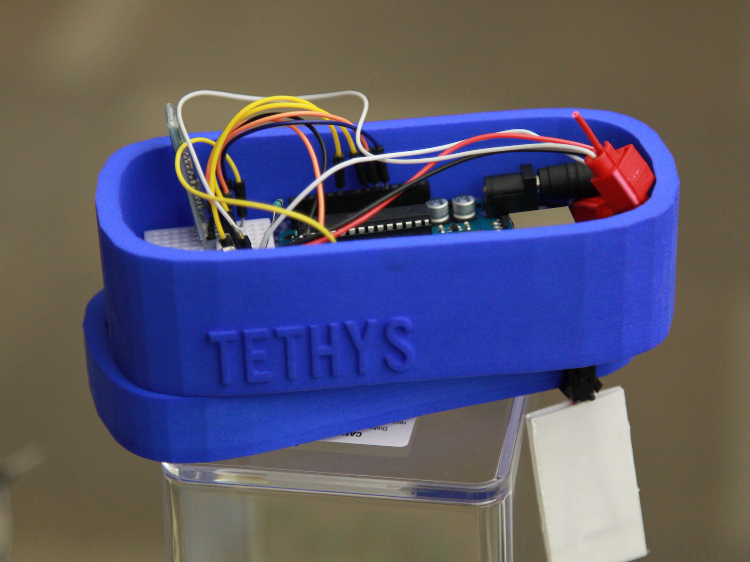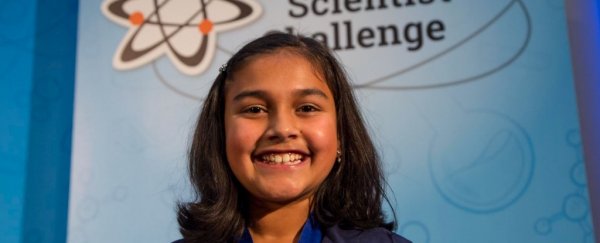Gitanjali Rao, an 11-year-old from Lone Tree, Colorado, is the winner of this year's Discovery Education 3M Young Scientist Challenge for her sensor that can detect lead levels in water better than traditional methods.
Rao, whose victory was announced late in the evening of Tuesday 17 October, will take home US$25,000 for the idea, which she said she developed approximately five months ago in response to learning about the ongoing water crisis in Flint, Michigan.
"The idea just came to me when I saw my parents testing for lead in our water," Rao, a seventh-grader, told Business Insider.
"I went, 'Well, this is not a reliable process and I've got to do something to change this'."
 Andy King, Discovery Education 3M Young Scientist Challenge
Andy King, Discovery Education 3M Young Scientist Challenge
Lead-contaminated water is a problem for more than 5,300 water systems in the US, according to 2016 data. If people want to test their water, they generally rely on one of two methods.
They can either use lead-testing strips, which are fast but not entirely accurate; or they can send the water to the EPA for analysis, which is time-consuming and requires expensive equipment, Rao explained. She wanted to devise a smarter, more effective solution.
Over the course of the summer, Rao worked with 3M scientists to bring her proposed sensor to life. The device, which Rao named Tethys after the Greek goddess for water, uses carbon nanotubes to detect the presence of lead.
She tuned, or "doped," the carbon nanotubes specifically to detect lead, pairing the device with a mobile app displaying the water's status.
Now that she's won, Rao said she hopes to refine the device further. Eventually, she hopes to sell the sensor to anyone living in an area where lead contamination is a problem.
Rao wants to be either a geneticist or epidemiologist (someone who studies the spread of disease) when she grows up. Lead contamination was interesting to her, she said, because it combines both disciplines.
"If you take a shower in contaminated water, you do get rashes and that can easily be studied by an epidemiologist," she said. "And if somebody drinks lead in their water, their children might have small, minor defects."
In either case, she said the goal with Tethys was simply to reach as many people as possible.
"I studied a little bit of both of these topics since I was really interested in these fields," she said, "and then I came up with this device to help save lives."
This article was originally published by Business Insider.

